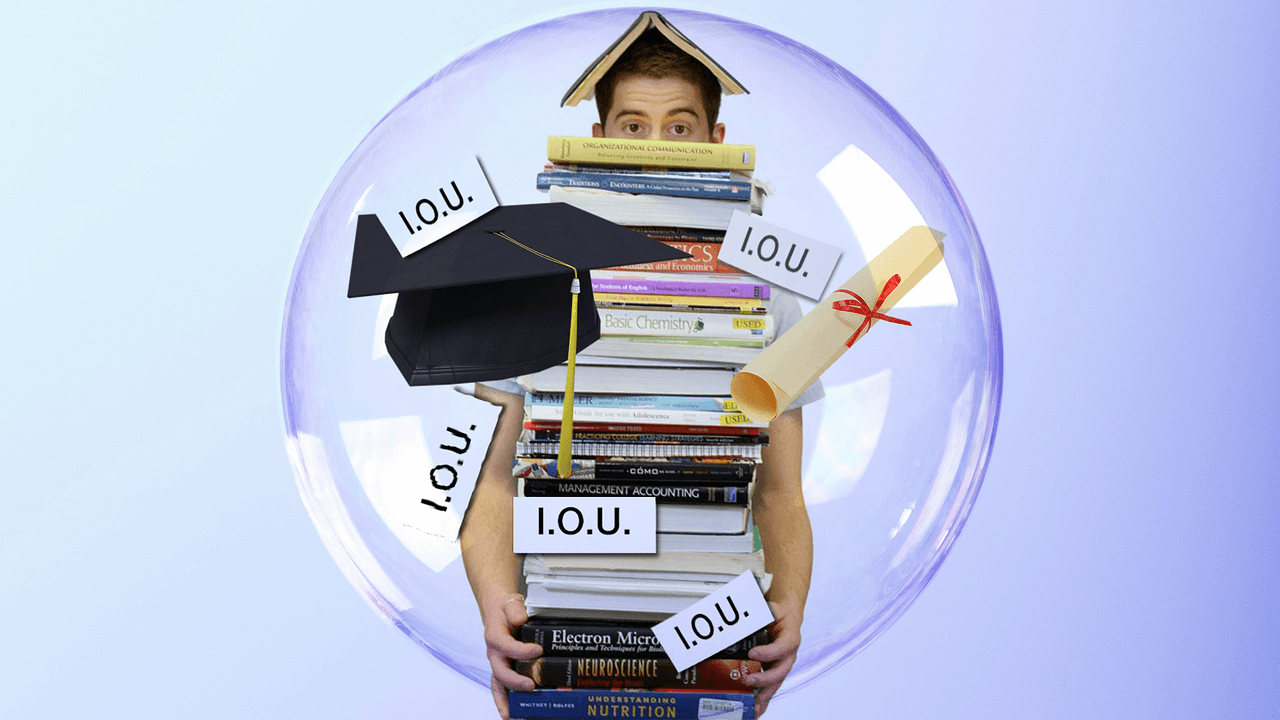Student-centric advice and objective recommendations
Higher education has never been more confusing or expensive. Our goal is to help you navigate the very big decisions related to higher ed with objective information and expert advice. Each piece of content on the site is original, based on extensive research, and reviewed by multiple editors, including a subject matter expert. This ensures that all of our content is up-to-date, useful, accurate, and thorough.
Our reviews and recommendations are based on extensive research, testing, and feedback. We may receive commission from links on our website, but that doesn’t affect our editors’ opinions. Our marketing partners don’t review, approve or endorse our editorial content. It’s accurate to the best of our knowledge when posted. You can find a complete list of our partners here.
Which Student Loans Should I Pay Off First?
 By
Kayla Korzekwinski
By
Kayla Korzekwinski 
Kayla Korzekwinski is a Scholarships360 content writer. She earned her BA from the University of North Carolina at Chapel Hill, where she studied Advertising/PR, Rhetorical Communication, and Anthropology. Kayla has worked on communications for non-profits and student organizations. She loves to write and come up with new ways to express ideas.
Full BioLearn about our editorial policies

When it comes time to repay your student loans, it can be hard to decide which loans to pay off first. If you have multiple loans, they may all seem important for different reasons. There are many ways to determine where to start with your repayment. Continue reading to learn more about which student loans you should pay off first!
Pay off loans with higher interest first
The best way to save money in the long run is to target your loans with higher interest rates first. This is because interest builds over time, and it makes your overall balance larger. How does this happen? When you make a student loan payment, it always goes toward the interest first, and whatever is left is applied to the principal balance. Therefore, it is wise to pay off the loans with the highest interest rates because it is more difficult to make a dent in the actual principal balance on those loans.
If you have multiple student loans, check their interest rates to decide which to pay. Target higher-interest loans by putting extra money you earn toward the loan with the highest interest rate. Continue making the minimum payments on all your other loans in the meantime.
See also:
Pay off private loans first
If you have both federal and private loans, focus on paying off your private loans first. This is a good idea because private loans typically have higher interest rates than federal loans. Additionally, private loans don’t provide as much flexibility with repayment plans and deferment or forbearance options.
If you focus on paying off private loans first, be sure to continue making the minimum payments on your federal loans. One way you can lower your monthly federal loan payments is enrolling in an income-driven repayment plan. Under these plans, your monthly payments are based on your income, and will be lower than they would have been on the standard repayment plan. Keeping federal loan payments lower can help you focus on your private loans.
Pay off unsubsidized loans first
Another type of loan you should focus on first is federal Direct Unsubsidized loans. Direct loans can be subsidized or unsubsidized. If a loan is subsidized, it doesn’t accrue interest while you’re still in school. Unsubsidized loans do accrue interest while you’re in school and while you’re in repayment. The interest that accrued while you were in school will make your unsubsidized loan balance higher.
See also: PAYE vs. REPAYE Student Loan Repayment
Repayment strategies
There are a few debt repayment strategies that can also help you decide which loans to pay off first.
Debt avalanche
The debt avalanche method involves targeting your loan with the highest interest rate first. Organize your loans in order from highest to lowest interest rate, and focus on the top one. Target the loan by making extra payments on it. This will keep your interest down and save you money over time.
Debt snowball
The debt snowball method targets loans based on the balance. Organize your loans from lowest balance to highest balance. Focus on making extra payments toward the loans that have the lowest balance first. This method is ideal if you prefer to have the satisfaction of paying off loans in full. It also helps you see the results of your hard work sooner. However, it won’t save you as much money in interest as the debt avalanche.
Refinancing
If you’d prefer to not balance several different loans, you can refinance. Refinancing allows you to combine all your loans into one new loan with a private lender. This will give you fewer payments to keep up with every month. Refinanced loans usually have lower interest rates, too. Private and federal loans can be refinanced together, but you’ll lose the benefits that come with federal loans.
See also: Student Loan Consolidation vs. Refinancing
The best way to pay off your loans is to do it as quickly as possible. Use the advice above to decide which student loans to pay off first. Then, choose and stick to a plan that you feel works best for you!





